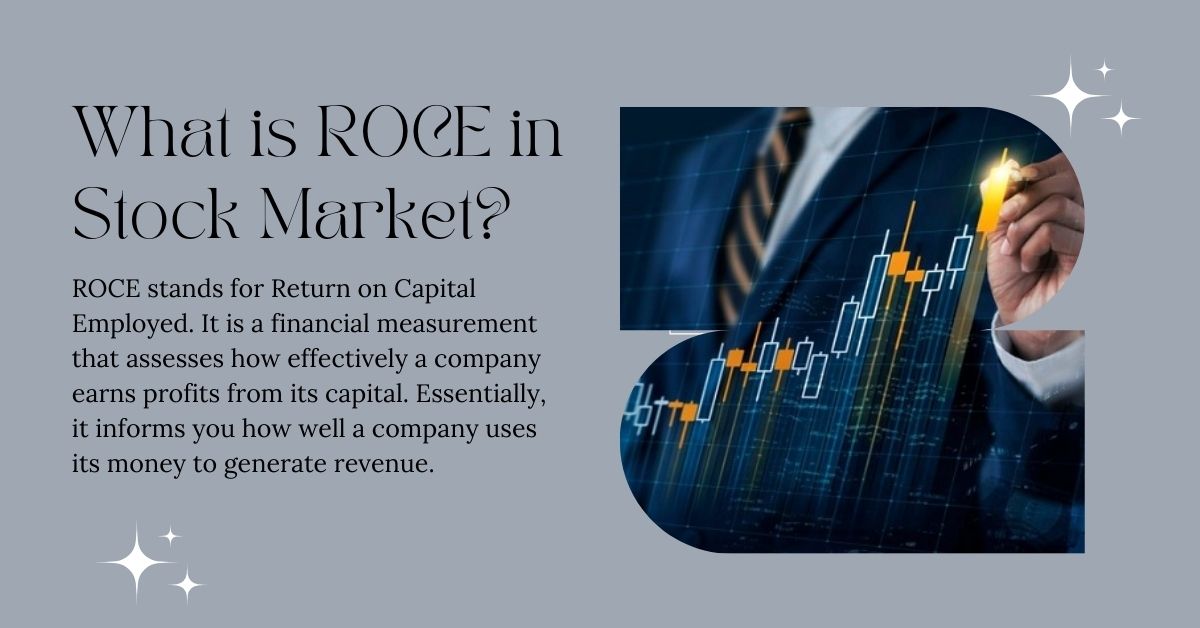The return on capital employed (ROCE) measures the profitability of a company and the efficiency of its use of capital. It is calculated as EBIT divided by capital employed and shows how well a company generates returns on its investments.
A higher ROCE indicates an efficient use of capital, while a lower ROCE indicates possible inefficiencies. Analysts use ROCE to compare companies within the same industry, monitor trends and assess financial health.
Companies can improve ROCE by increasing profitability and optimizing the use of capital. A good ROCE exceeds the cost of capital and reflects an effective allocation of resources, while a low ROCE indicates potential operational or strategic problems.
Investing in the stock market means investing in companies that you believe will be profitable either now or in the future. Before investing in a company, they most likely conduct research to determine its profitability.
The profit for the company is the profit for the investor. Return on capital employed” (ROCE) is a measure of a company’s profitability and it is important to understand the definition of ROCE.
What is ROCE in Stock Market?

ROCE stands for return on capital employed. It is a financial indicator that measures how effectively a company generates profits with its capital. Essentially, it provides information on how well a company uses its money to generate income.
A higher ROCE shows that a company is generating profits efficiently, while a lower ROCE means that the company may not be using its capital properly. Investors often use ROCE to assess the profitability of different companies in the same industry.
What is ROCE in Stock Market Formula?
ROCE Formula: ROCE = EBIT / Capital Employed
- EBIT stands for Earnings Before Interest and Tax, which represents a company’s operating profit.
- Capital Employed is the total amount of capital invested in the business, calculated as Total Assets minus Current Liabilities.
For example, consider Reliance Industries, a major Indian conglomerate. We can compute Reliance’s ROCE as follows: ROCE = 1,00,000 crore / 5,00,000 crore = 0.2 or 20%. This means Reliance earns Rs. 20 for every Rs. 100 invested in the firm.
A greater ROCE suggests more efficient capital allocation, whereas a lower ROCE may highlight opportunities for development in a company’s operations.
Advantages and Disadvantages of ROCE
| Feature | Advantages | Disadvantages |
|---|---|---|
| Ease of calculation | Relatively simple to calculate | May not consider industry-specific factors |
| Profitability assessment | Provides a good measure of a company’s efficiency in using capital | is susceptible to accounting policies |
| Comparability | Allows for comparison between companies within the same industry | Limited usefulness in comparing companies across different industries |
| Focus on operational efficiency | Highlights companies that generate high returns from their capital base | Ignores external factors like market conditions |
How Analysts Use ROCE?
Analysts use ROCE to measure the financial health and performance of a company. By comparing a company’s ROCE to the industry average, analysts can determine whether the company is achieving a higher return on capital. A consistently high ROCE indicates that a company is managing its resources effectively and is likely to be a profitable business.
Analysts often use ROCE to monitor changes in a company’s performance over time and identify new trends. In addition, analysts often combine ROCE with other financial statistics to get a comprehensive picture of a company’s financial position.
How Companies Can Improve the ROCE Ratio?
Companies can increase their ROCE ratio by focusing on increasing profitability while reducing capital employed. To increase profitability, companies can reduce costs, improve operational efficiency, and diversify into higher-margin product lines. Optimizing inventory levels, plant utilization, and divesting non-core assets can help reduce capital employed.
Similarly, companies can consider strategic acquisitions or alliances to strengthen their competitive position and drive growth. Companies that employ these tactics can increase their return on capital employed (ROCE) and create long-term value for shareholders.
Read More:
- What is Discounted Cash Flow (DCF)? A Simple Explanation for Investors
- EV/EBITDA Explained: What Does It Really Mean?
Difference Between ROE and ROCE
| Feature | ROE (Return on Equity) | ROCE (Return on Capital Employed) |
|---|---|---|
| Focus | Profitability generated for shareholders | Overall profitability generated from all capital |
| Calculation | Net Income / Shareholders’ Equity | EBIT / Capital Employed |
| Capital Considered | Only shareholders’ equity | Both debt and equity |
| Perspective | Shareholders’ perspective | Overall business perspective |
| Leverage Impact | Highly influenced by leverage | Less influenced by leverage |
| Industry Comparison | Suitable for comparing companies with similar capital structures | More suitable for cross-industry comparison |
What Is a Good ROCE Value?
Many people believe that a high ROCE value exceeds the company’s cost of capital. This means that the company’s profits exceed the cost of financing these investments. However, the ideal ROCE value varies greatly from industry to industry. A high-growth technology company is likely to have a higher ROCE than an established utility company.
Comparing a company’s ROCE to the industry average can also provide useful information about its relative performance. Finally, a high ROCE indicates effective capital allocation and solid profitability.
What is a Bad ROCE Percentage?
A poor return on capital employed (ROCE) is commonly defined as a value that is below the company’s cost of capital. This indicates that the company’s investments are yielding less profit than the cost of financing them. A low ROCE can indicate an inefficient allocation of capital, operational inefficiencies or a faltering business strategy.
However, before making a final decision, it is important to look at the industry average and the company’s individual circumstances. A persistently low ROCE is a warning signal for investors as it indicates that the company is struggling to create value for its shareholders.

